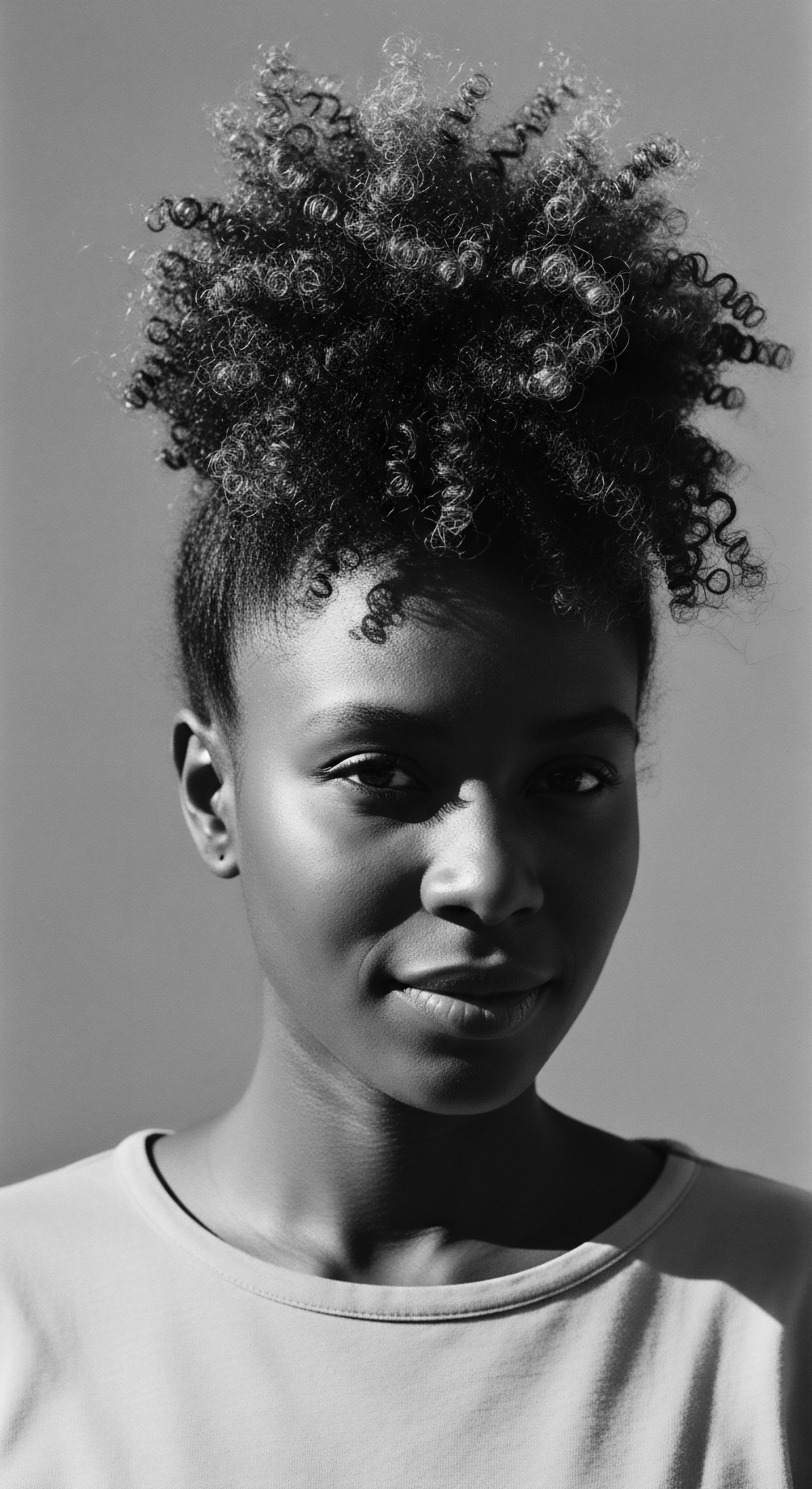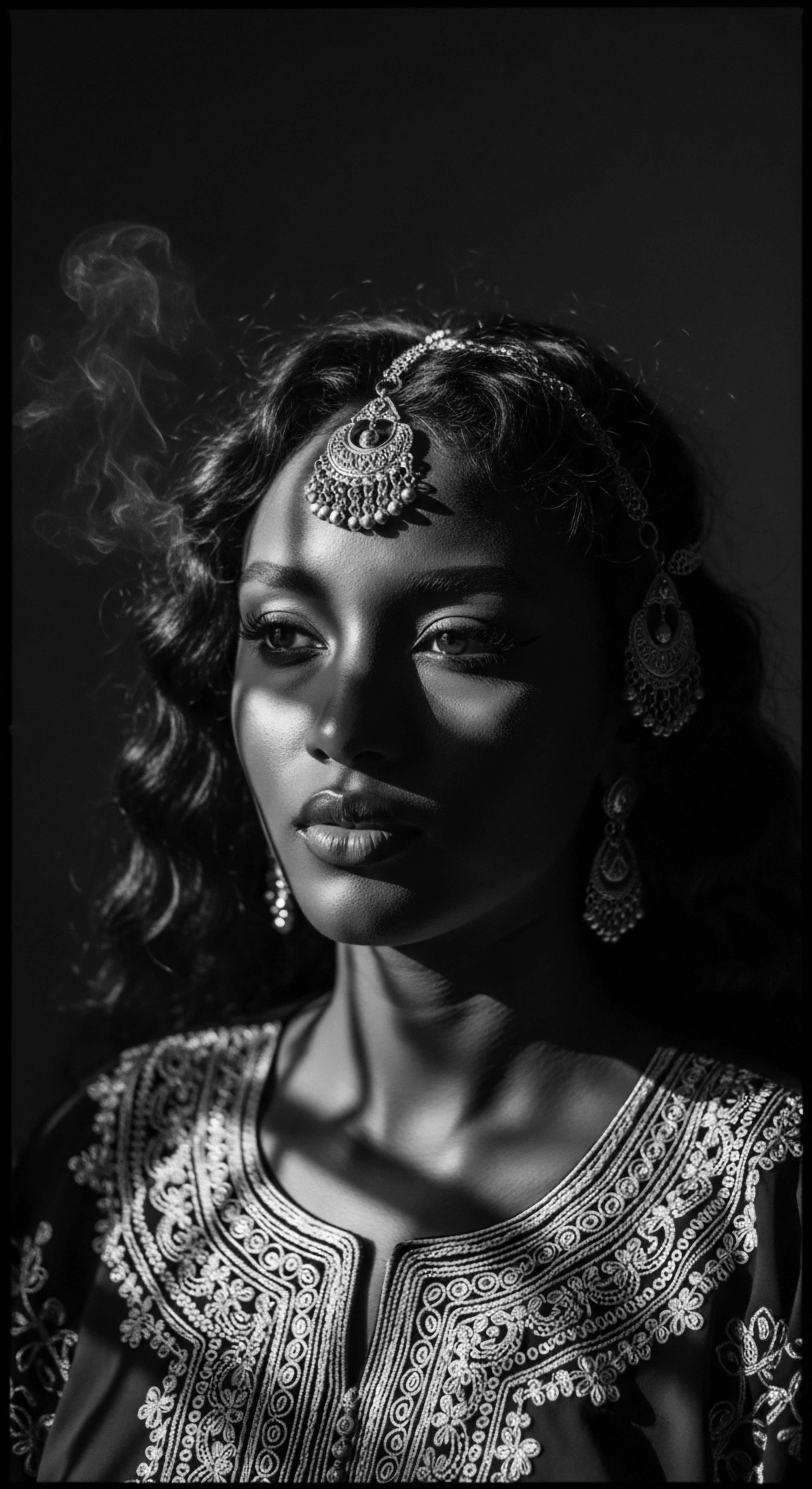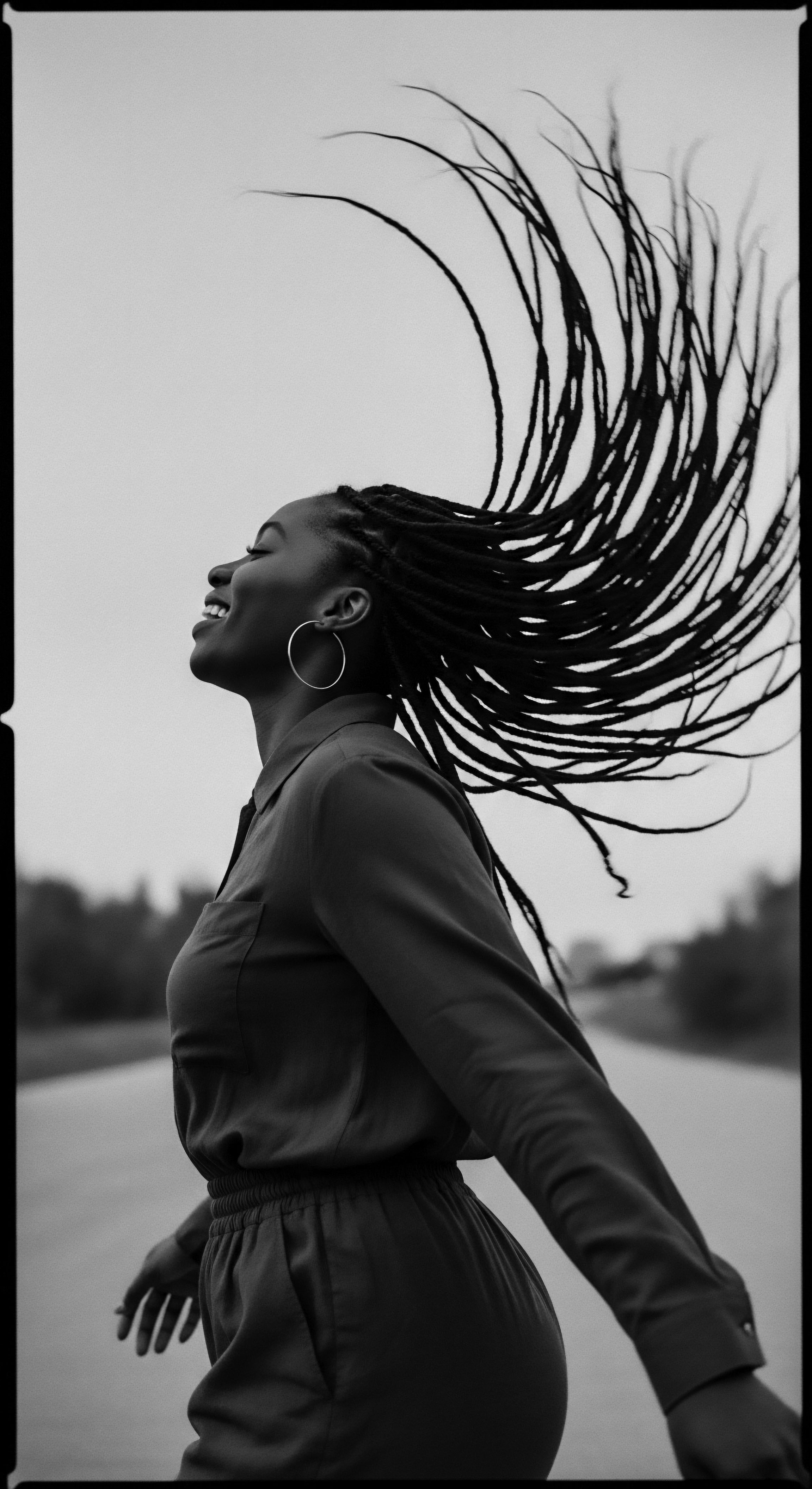
Roots
There exists within the very fabric of our being, a memory etched deeply into each curl, every coil, a whisper from generations long past. This is the truth of textured hair ❉ it carries a profound heritage, a chronicle etched not in dusty tomes, but in the living strands that grace our crowns. To ask how historical styling tools relate to contemporary textured hair practices is to peer into an unbroken lineage, a continuous conversation between ancestors and their descendants, a dialogue spoken through implements of care and adornment. We speak of more than mere objects; these are extensions of communal hands, vessels of ancestral wisdom, shaped by the very biology of our hair and the environments that nurtured our people.

Hair’s Ancestral Architecture
Consider the singular architecture of textured hair, its helical spring, its varied diameter, the way it naturally forms a protective canopy against the sun and humidity of diverse ancestral lands. This unique cellular blueprint, spanning from the follicle’s intricate design to the keratin’s very twists, dictates specific needs and vulnerabilities. Early communities across Africa, and later within the diaspora, understood these inherent qualities not through microscopes, but through generations of intimate observation and tactile knowledge.
Their tools, then, were not arbitrary inventions; they were thoughtful responses to hair’s innate characteristics. A comb crafted from bone or wood, with wide, polished teeth, mirrored the need for gentle separation, honoring the delicate coil that might otherwise resist finer implements.
The story of textured hair tools begins not in invention, but in observation of hair’s natural form and environmental purpose.
Early tools often reflected the local biome. In regions rich with hardwoods, combs were carved with intricate patterns, sometimes denoting tribal affiliation or spiritual beliefs. In other areas, animal horn or ivory became the material of choice, each piece shaped to glide through hair, minimizing breakage. These implements weren’t simply for grooming; they were integral to maintaining the structural integrity of hair that was, by its very nature, prone to tangling and dryness in certain climates.
The tools facilitated the even distribution of natural emollients harvested from the earth’s bounty, ensuring scalp health and strand vitality. This relationship between tool and hair’s inherent structure forms the very first connection across time.

The Language of Strands
Our forebears possessed a nuanced lexicon for hair, often far more detailed than modern classifications. This wasn’t merely about type 3c or 4a; it was about the spirit held within the hair, its familial ties, its social standing. Such specific understanding naturally influenced the development of tools. A tool designed for compact, tightly coiled hair might differ significantly from one for looser, undulating waves.
Each specialized instrument became a tangible articulation of a particular hair texture’s needs. For instance, archaeological finds from ancient Kush and Kemet, modern-day Sudan and Egypt, reveal wooden , bone , and ivory combs buried with their owners, underscoring the sacred nature of hair and its tools. These combs often bore carvings signifying identity, rank, fertility, and even protection. This deep cultural naming and classification process was intertwined with the tools used for each distinct hair presentation, demonstrating an ancestral grasp of hair biology far predating Western scientific naming conventions.

How Did Environment Shape Early Tool Development?
The vast environmental tapestry of ancestral lands played a defining role in the evolution of hair care and its accompanying tools. Hot, arid climates necessitated moisture retention, leading to tools that aided in applying and working in natural oils and butters derived from indigenous plants. Humid environments, by contrast, might have seen the advent of tools that helped define and preserve structured styles, preventing excessive shrinkage or frizz. The resourcefulness of communities also shaped tool materials.
Where metalworking skills flourished, more durable, sometimes heated, implements eventually appeared. Conversely, regions abundant in specific plant fibers saw the ingenious use of natural materials for detangling or braiding assistance. These adaptive responses to diverse environmental challenges highlight how deeply practical innovation was bound to the needs of textured hair, forming a continuous chain from ancient ingenuity to modern practice.

Ritual
The journey from historical styling tools to modern textured hair practices traces a path rich with ritual and cultural significance. These implements, though often simple in design, served as conduits for shared experience, identity expression, and meticulous care. They were central to transforming the raw beauty of hair into statements of community, status, and selfhood. The relationship between tool and technique, passed down through generations, transcends mere utility; it speaks to the very soul of a strand, connecting us to a heritage of resilience and creativity.

Ancestral Hands, Enduring Techniques
Protective styling, now a widely celebrated practice, finds its profound origins in ancestral traditions. Styles like Braids, Twists, and Locs were not simply aesthetic choices; they were strategies for preserving hair health, signifying belonging, and even conveying coded messages. The earliest tools for these intricate styles were often the bare hands themselves, aided by simple implements like sharpened sticks, bone picks, or wooden needles. These tools were instrumental in creating patterns that could denote marital status, age, religion, or clan membership in West African societies.
The rhythmic pulling and twisting involved in braiding, for instance, could extend for hours, fostering communal bonding and storytelling, making the tools—or lack thereof—part of the social fabric. While modern tools like fine-tooth sectioning combs or clips assist in precision, their fundamental purpose remains connected to the ancestral need for systematic, gentle organization of strands.
- Bone Combs ❉ Often intricately carved, these were used for detangling and creating precise parts in ancient African cultures.
- Wooden Pins ❉ Simple yet effective, these helped secure braids and twists, particularly in regions where other materials were scarce.
- Natural Fibers ❉ Sometimes used as extensions or to aid in twisting, connecting hair to the environment.

The Evolution of Thermal Styling Tools
The idea of altering hair texture with heat is not a recent phenomenon. Accounts suggest early forms of thermal hair management existed, albeit primitively. Before the widespread use of sophisticated irons, individuals might have used heated stones or even hot butter knives to temporarily smooth or curl hair, particularly in regions where European beauty ideals began to hold sway. This rudimentary application of heat speaks to a long-standing desire for versatility.
The true turning point, certainly within the African American experience, arrived with the popularization of the hot comb. While a French hairdresser, Marcel Grateau, is often credited with inventing a heated hair-waving iron in the late 19th century, the hot comb as a distinct tool for straightening tightly coiled hair gained prominence and was adapted and popularized within the Black community by pioneering figures. Annie Malone and Madam C.J. Walker were central to bringing improved versions of this tool to wider use, with Walker reportedly widening the teeth for better functionality on textured hair.
Bernice Johnson Reagon, founder of the singing group Sweet Honey in the Rock, described the hot comb’s significance as a veritable “ritual of passage” for young Black girls, often reserved for special occasions like Easter or church events, rather than daily school wear. This powerful example underscores how a tool, initially conceived for broader use, became deeply culturally embedded, signifying preparation, presentation, and participation in specific communal rites, despite its later association with conforming to Eurocentric beauty standards. The hot comb, whether heated on a stove or via early electrical heaters, became a potent symbol of resilience and adaptation, navigating societal pressures while maintaining a connection to communal care routines.
| Historical Tool Wide-Tooth Wooden Comb |
| Traditional Use/Significance Gentle detangling, parting for intricate styles, distributing natural oils; signified status. |
| Modern Tool Equivalent Plastic or silicone wide-tooth comb, detangling brush with flexible bristles. |
| Historical Tool Heated Metal Comb/Stone |
| Traditional Use/Significance Temporary smoothing or "pressing" of hair, often for ceremonial or social presentation. |
| Modern Tool Equivalent Electric hot comb, flat iron, curling wand for thermal styling. |
| Historical Tool Fingers and Simple Picks |
| Traditional Use/Significance Coil definition, twisting, knotting, creating protective styles like braids and locs. |
| Modern Tool Equivalent Sectioning clips, rat-tail combs for parting, specialized coil definers. |
| Historical Tool These comparisons reveal a continuity of function, with modern tools offering enhanced precision and convenience while echoing ancestral needs. |

How Do Styling Tools Reflect Shifting Ideals?
The trajectory of styling tools mirrors the complex evolution of beauty ideals within diasporic communities. In periods of profound oppression, when natural hair was often demeaned, tools that offered temporary straightening provided a means of perceived acceptance or even safety within a dominant society. The widespread use of the hot comb, for instance, became intertwined with aspirations of social mobility and the challenging pursuit of “good hair,” a term unfortunately equating desirable hair with straighter textures. Yet, within this context, the tools also symbolized agency—the ability to manipulate one’s appearance, to present oneself, even when choices were constrained.
The mid-20th century saw the rise of chemical relaxers, a more permanent form of straightening, which also relied on specific application tools. The emergence of the natural hair movement in the late 20th and early 21st centuries saw a reclamation of traditional tools like the afro pick, transforming it from a mere styling device into a powerful symbol of cultural pride and liberation. Modern styling tools, therefore, carry a dual legacy ❉ they represent technological advancement but also serve as a constant reminder of the historical interplay between identity, pressure, and self-expression, always tied to the enduring heritage of textured hair.

Relay
The ongoing dialogue between historical styling tools and contemporary textured hair practices is a relay race across time, each generation passing on insights, adaptations, and innovations. This constant exchange shapes our holistic approach to hair care, problem-solving, and ritual, grounding modern techniques in ancestral wisdom. It is in this relay that we discern the enduring principles of care that transcend specific tools, holding a deep respect for textured hair’s intrinsic needs and its heritage.

Building Personalized Regimens from Shared Memory
Modern textured hair regimens, though seemingly a product of our time, draw deeply from ancestral care philosophies. The emphasis on moisturizing, protecting ends, and gentle detangling, for instance, finds resonance in age-old practices. Early communities, without the benefit of scientific labs, understood the importance of creating bespoke care routines. Their “tools” included not only physical objects but also intuitive knowledge of plants, climate, and the individual’s hair characteristics.
The preparation of traditional ingredients—like the grinding of shea nuts to produce Shea Butter or the extraction of Palm Kernel Oil—involved specialized implements, often rudimentary presses or mortars and pestles. These tools were foundational to creating the very conditioners and stylers that laid the groundwork for complex routines today. The concept of a “regimen” itself, a deliberate sequence of care steps, echoes the ritualistic nature of ancestral grooming, where time and intention were woven into every strand.
Consider the communal hair-dressing sessions of West African societies, where elaborate styles could take days to complete. The tools used—fingers, simple wooden picks, and sometimes natural twine for extensions—were handled with a reverence born of shared understanding and collective purpose. These sessions were not simply about aesthetics; they served as spaces for intergenerational teaching, for transmitting cultural narratives, and for reinforcing social bonds. The meticulousness required for such prolonged styling sessions highlights an ancestral appreciation for the long-term health of hair, a concept that underpins many contemporary protective styling choices and their associated tools.

The Night’s Gentle Embrace ❉ Bonnet Wisdom
The modern satin bonnet, a ubiquitous tool for many with textured hair, is a direct descendant of ancient and historically significant head coverings. These coverings served dual purposes ❉ protecting intricate hairstyles from the elements and preserving moisture, especially during sleep. Historically, various cloths and wraps, often of natural fibers, were used across African and diasporic communities for protection. During periods of enslavement and beyond, headwraps became a form of quiet resistance and preservation, a way to maintain personal dignity and protect hair in harsh conditions when other tools were denied.
The evolution to the modern satin bonnet reflects a scientific understanding of friction and moisture retention, yet it carries the profound cultural memory of protection, resilience, and self-care. The bonnet, therefore, is not a simple accessory; it is a living symbol of a protective heritage, a tool that spans centuries, ensuring the longevity and health of textured hair from dusk till dawn.

How Do Tools Facilitate the Use of Traditional Ingredients?
Traditional ingredients form the heart of ancestral hair care, and specific tools were devised to extract, prepare, and apply them. Think of the large grinding stones and mortars used to process Amla or Bhringraj in Ayurvedic traditions, or the wooden presses for rendering Coconut Oil in coastal African and Caribbean communities. These were not just implements of production; they were tools of transformation, turning raw botanicals into nourishing elixirs. The combs and picks, then, acted as instruments of distribution, ensuring these vital emollients reached every part of the scalp and strand.
Today, while we purchase oils and butters in ready-to-use forms, the ancestral tools remind us of the deep connection between the earth’s bounty and hair’s vitality. Understanding this lineage helps us appreciate the holistic wisdom embedded in traditional hair care, recognizing that the tools and the ingredients were always inseparable, working in concert for total hair wellness.
- Clay Bowls and Spatulas ❉ Used for mixing and applying natural masks and cleansers, ensuring even coverage.
- Hair Picks (Various Materials) ❉ Beyond styling, these tools aided in working oils and butters through dense hair, reaching the scalp.
- Finely Woven Cloths ❉ Employed for drying, detangling, or securing hair after cleansing, minimizing friction and damage.

Addressing Hair Challenges ❉ Old Ways, New Tools?
Challenges like dryness, breakage, or scalp irritation were present in every era. Ancestral knowledge, often facilitated by specific tools, offered solutions. For instance, the consistent use of smooth, wide-tooth combs reduced physical stress on the hair, mitigating breakage long before the science of tensile strength was understood. The application of herbal rinses or poultices, often mixed and applied with simple wooden spoons or hands, addressed scalp issues.
Modern problem-solving tools, such as specialized deep conditioning caps or scalp massagers, are refinements of these age-old principles. They build upon the foundational understanding that textured hair thrives with gentle manipulation, consistent moisture, and a healthy scalp environment. The connection is undeniable ❉ our current solutions, even with their advanced tools, echo the proactive and restorative practices of our heritage, always aiming to support hair’s natural resilience. The relay of wisdom continues, each innovation a new stride in a timeless race towards holistic hair well-being.

Reflection
As we conclude this exploration, the echoes of ancestral hands working on textured hair resonate with clarity. The journey from rudimentary tools forged from nature’s offerings to the precision instruments of today is not a linear march of progress, but a spiraling helix of enduring heritage. Each comb, each pick, each simple wrap carries stories of survival, artistry, and profound self-expression.
These objects are more than mere implements; they are tangible links to generations of knowledge, symbols of resilience, and silent witnesses to the evolving relationship between textured hair and the societies that have nurtured, challenged, and celebrated it. The “Soul of a Strand” ethos reveals itself in this unbroken chain ❉ the intrinsic life of our hair, deeply connected to its biological blueprint, is irrevocably bound to the rituals of care and the tools that facilitate them.
The historical styling tools, born of necessity and ingenuity, speak to a deep understanding of textured hair long before scientific terms articulated its complexities. They highlight an ancestral wisdom that instinctively responded to hair’s unique structure, its environmental needs, and its immense cultural value. In modern practices, we see these ancient principles mirrored—the preference for gentle detangling, the emphasis on moisture, the power of protective styles.
Our contemporary tools, while technologically advanced, serve the same fundamental purposes, often making accessible the intricate care once known only through intimate, generational transmission. This continuity is a testament to the timeless wisdom embedded within our hair heritage.
To engage with textured hair today, therefore, is to partake in a living archive. It is to honor the ingenuity of those who carved the first wide-tooth combs, who understood the protective power of a tightly braided style, or who found solace and agency in the smoothing touch of a heated iron. The tools, past and present, are threads in this continuous narrative, each one a testament to the adaptability of human spirit and the enduring beauty of textured hair.
They remind us that our hair is not just hair; it is a repository of history, a canvas for identity, and a profound connection to an ancestral past that continues to shape our present and guide our future. The legacy of these tools is a call to recognize the sacredness of our strands and to care for them with the same reverence and wisdom that has been passed down through countless generations.

References
- Byrd, Ayana D. and Tharps, Lori L. Hair Story ❉ Untangling the Roots of Black Hair in America. St. Martin’s Press, 2001.
- Dabiri, Emma. Twisted ❉ The Tangled History of Black Hair Culture. HarperCollins, 2019.
- Flowers, Ebony. Hot Comb. Drawn and Quarterly, 2019.
- LoPresti, P. Papa, C.M. & Kligman, A.M. “Hot comb alopecia.” Archives of Dermatology, vol. 98, no. 3, 1968, pp. 234-238.
- Reagon, Bernice Johnson. If You Don’t Go, Don’t Hinder Me ❉ The African American Sacred Song Tradition. University of Nebraska Press, 2001. (Quote attributed in)
- Sherrow, Victoria. Encyclopedia of Hair ❉ A Cultural History. Greenwood Press, 2006.
- Sperling, L. C. & Sau, P. “The histopathology of hot comb alopecia.” Journal of the American Academy of Dermatology, vol. 27, no. 5, 1992, pp. 692-696.
